Bergie's top 5 GBR species

The Great Barrier Reef is one of the most bucket list destinations in Australia to go fishing. Whether you are a local or a visitor fishing the Great Barrier Reef is one of the most iconic angling destinations in the world.

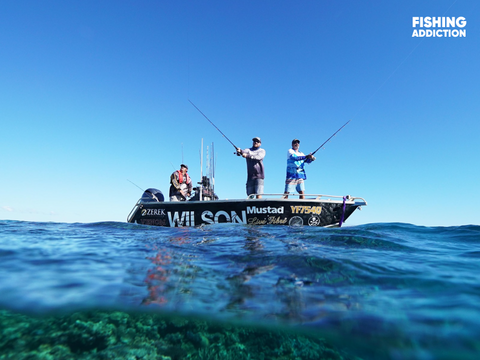
This natural wonder transcends mere status as a UNESCO World Heritage Site; it stands as the planet's largest coral reef system, teeming with diverse marine life. Spanning over 344,000 square kilometres (13,800 square miles) along the Queensland coast, it comprises nearly 3,000 individual reefs and 900 islands, visible even from space.


Whether casting from sandy shores or trolling aboard a charter, every angler encounters a fusion of scenic splendour and aquatic abundance.
Bergie's top 5 Fishing Species on the Great Barrier Reef:
Coral Trout:
Coral Trout fishing at the Great Barrier Reef is a popular activity due to the species' abundance and culinary value. Found throughout the reef's complex systems, they're typically caught using bait fishing methods but are also susceptible to poppers and lures.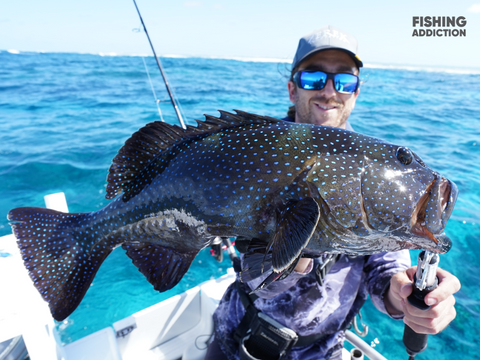
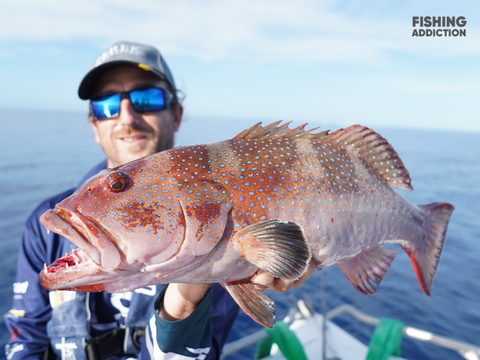


Did you know that Coral Trout:
- are the most popular reef species to capture on the Great Barrier Reef
- inhabit the maze of reef systems and are caught all year round
- are fish-eating predators
- are caught using bait, jigs, soft plastics, stickbaits and poppers
- can grow to 20kg (44pounds)
- are absolutely delicious! Famous for their firm white flesh and mild flavour.
Red Emperor:
The Red Emperor stands as the pinnacle of reef fishing pursuits for many anglers. With a minimum size limit set high due to their slow growth rate of over 5 years before successful reproduction, these majestic fish command respect. Inhabiting various areas of the reef, larger specimens are often found amidst the rubbly ground and bommies in deeper waters, where they are primarily caught using bait fishing methods.

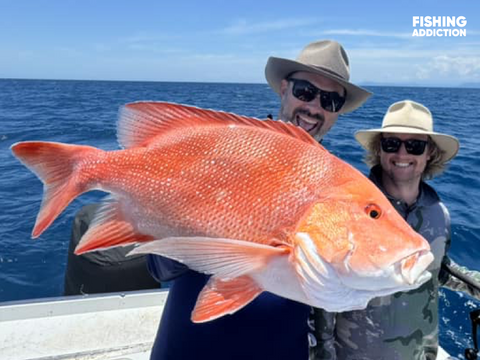
Sporting a formidable physique characterized by a huge head and broad shoulders, the Red Emperor delivers an adrenaline-fuelled fight once hooked. With powerful surges and relentless pulls, these fish challenge anglers every step of the way, fighting vigorously until they're finally brought aboard. Their legendary fighting capabilities are renowned among fishing circles.
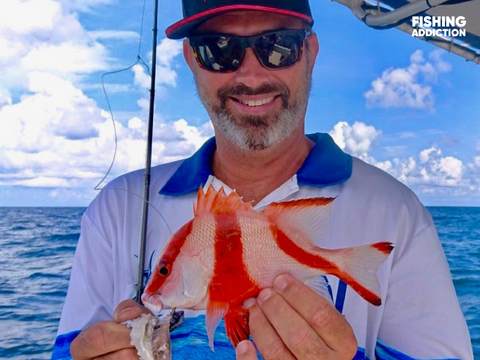

Red Emperor can grow up to 20kg, boasting beautiful firm flesh that is considered the epitome of reef fishing excellence by many. With a minimum size requirement of 55cm, landing a Red Emperor not only provides an exhilarating experience but also contributes to sustainable fishing practices, ensuring the preservation of this prized species for generations to come.
Did you know that Red Emperor:
- Hit maturity around 50cm 3-4 years old
- Inhabit a variety of areas on the reef
- are caught using bait, jigs or soft plastics
- have legendary fighting capabilities
- grow to over a meter in length and 22kg (4.4pounds) in weight
- have a minimum keep size of 55cm
Nannygai:
The Nannygai, available in small mouth and large mouth varieties, exhibits distinct characteristics. The small mouth variant tends to be smaller and sleeker, while the large mouth variety grows substantially larger and bulkier, featuring a prominent head. These fish are commonly found in large schools within deep waters, often congregating around rubbly terrain or near clusters of deep bommies. As a result of their habitat preferences, they are primarily targeted using bait fishing methods, although they can also be enticed by lures in a jigging motion.
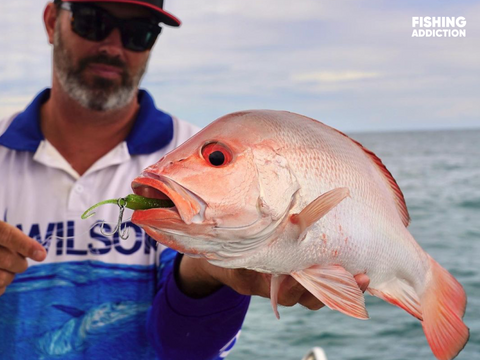
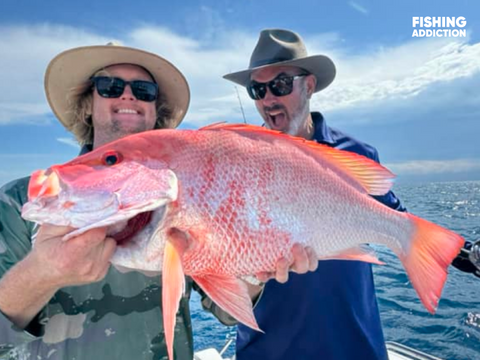
Nannygai are known for their formidable fighting spirit once hooked, particularly the larger specimens. As they ascend through the water column, they vigorously resist capture, displaying powerful kicks and punches that challenge anglers all the way to the boat. Small mouth Nannygai can weigh up to 8kg, while the larger mouth variety can reach an impressive 20kg. Their flesh is firm and prized for its excellent eating qualities. A minimum size requirement of 40cm is typically enforced.
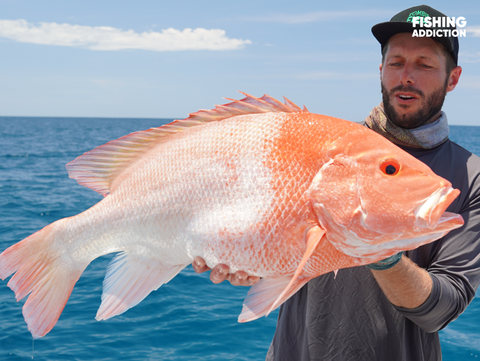
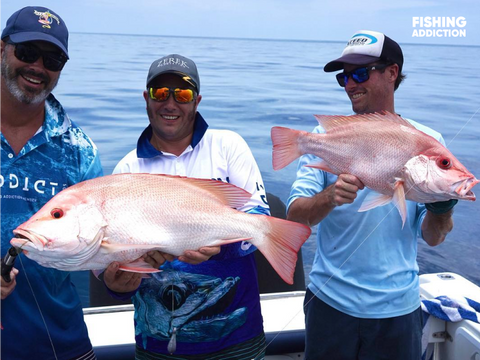
While Nannygai are often caught incidentally while reef fishing for other species, some anglers deliberately target Largemouth and Smallmouths. Medium-to-heavy spinning gear is usually sufficient, combined with 15-35 kg test braided or nylon line. It's worth noting that Eastern Nannygai can be especially spikey, so handling them requires caution, with gloves recommended.
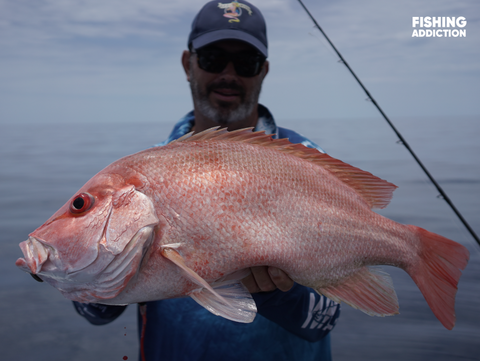
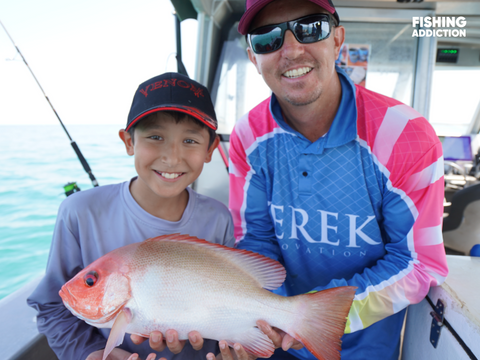
In terms of culinary appeal, Nannygai are prized for their white, firm flesh with abundant natural flavour. A simple cooking approach is often preferred, with frying the fillets—either breaded or beer-battered—as a popular choice. The key to preparing Nannygai is simplicity, as it allows the fish's natural flavour to shine through.
Did you know that Nannygai:
- are also known as Sea Perch, Reds, Big Mouth Nannygai, Saddle-Tail Snapper, Large-Mouth Seaperch, Scarlet Seaperch and even Red Snapper
- are caught in the small mouth and large mouth variety
- are found in large schools in the deep waters with rubbly ground
- are highly prized for its undeniably fighting ability by many Australian fishermen.
- are an excellent table fish.
Giant Trevally:
ONE species that has reached cult status in sportfishing circles in recent years is the giant trevally (Caranx ignobilis), better known as the “GT” by those who target them.

Commonly caught by both lure and bait fishermen, trevally specimens range from the smaller 2-3lb school trevally commonly found in estuaries, to the formidable 50lb thugs. These magnificent fighting fish can be found in rivers, estuaries, rocky headlands, and around reef structures and current lines.
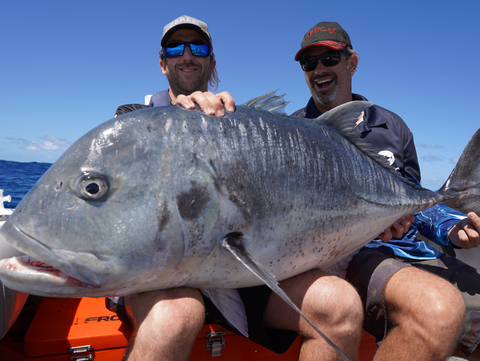
Trevally are known for their aggressive feeding behaviour, often crashing surface poppers and fizzers with great gusto until hooked. They also ambush deep diving lures around any structure and eagerly pick off live baitfish or prawns fished along sandbar drop-offs and estuary channels.

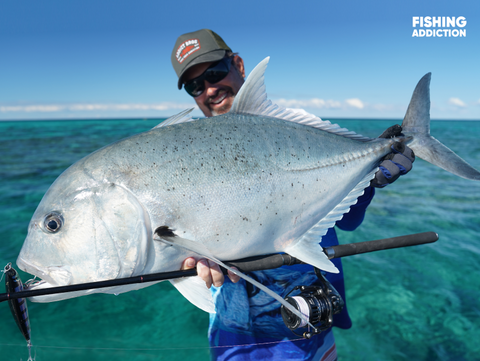
Prime targets for anglers are fish up to 25kg (50lb), although landing these giants requires top-quality tackle. Many big fish are lost to the razor coral edges, barnacle-encrusted rocks, and snags, emphasizing the need for robust gear. A minimum of 6kg tackle is recommended for targeting trevally.
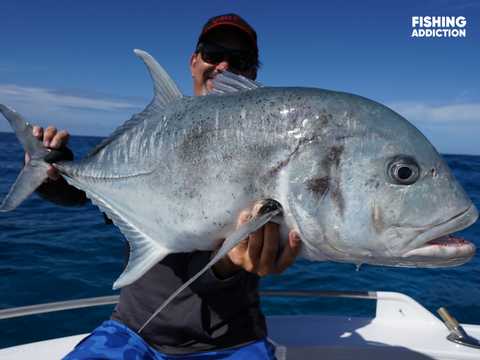
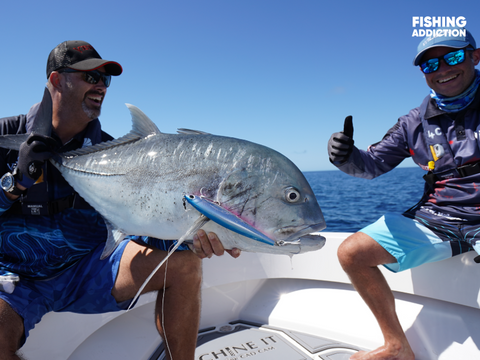
A growing sector of sportfishing focuses solely on GTs (Giant Trevally) on the Barrier Reef. Specialized charters attract anglers, particularly Japanese visitors, who hold these fish in higher regard than Black Marlin for their fighting qualities.
Did you know that Giant Trevally:
- are nomadic
- have more common cousins including gold spot trevally, tea-leaf trevally and golden trevally
- are caught by bait fishing, trolling, casting or jigging
- the largest GT caught in the GBR was reported to be over 60kg
Dogtooth Tuna:
Dogtooth Tuna, known as one of the world's toughest saltwater fish, have posed formidable challenges to anglers navigating the waters of North Queensland. With specimens exceeding 110kg, these titans of the ocean push angler, tackle, and guides to their limits.
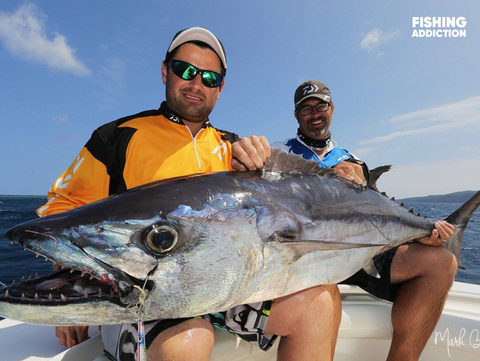
The initial run of a Dogtooth Tuna is a visceral experience, showcasing unmatched power and speed. However, their brutal and savage nature often leads to encounters that require not only skill but also a fair amount of luck to land massive specimens. From the risk of being busted off in the reef within the first 60 seconds to the threat of sharks and their massive teeth, every moment spent battling a Dogtooth Tuna is an adrenaline-fuelled test of resilience.

In the quest to tame these oceanic beasts, anglers have found success using super tough lures and jigs, particularly surface stickbaits. Despite their preference for stickbaits, Dogtooth Tuna will also take poppers, albeit with a lower hookup rate. Bergie, emphasizes the importance of understanding currents and locating the prime spots where Dogtooth Tuna thrive.
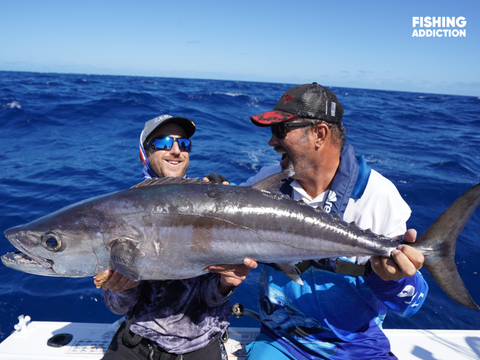

Early morning and late afternoon outings are recommended for the best chances of encountering these elusive predators, with locations such as the Ribbon reefs of the Great Barrier Reef proving particularly productive during certain tides, attracting not only Dogtooth Tuna but also other prized pelagic species like wahoo.
Did you know that Dogtooth Tuna:
- are aptly named for their 40 dog-like teeth - 20 upper and 20 lower
- are a member of the mackerel family
- can grow up to 2.5 m and weigh 130kg (imagine reeling that in!)
- are not the best eating fish
- have a diet consisting of school fish including rainbow runners









